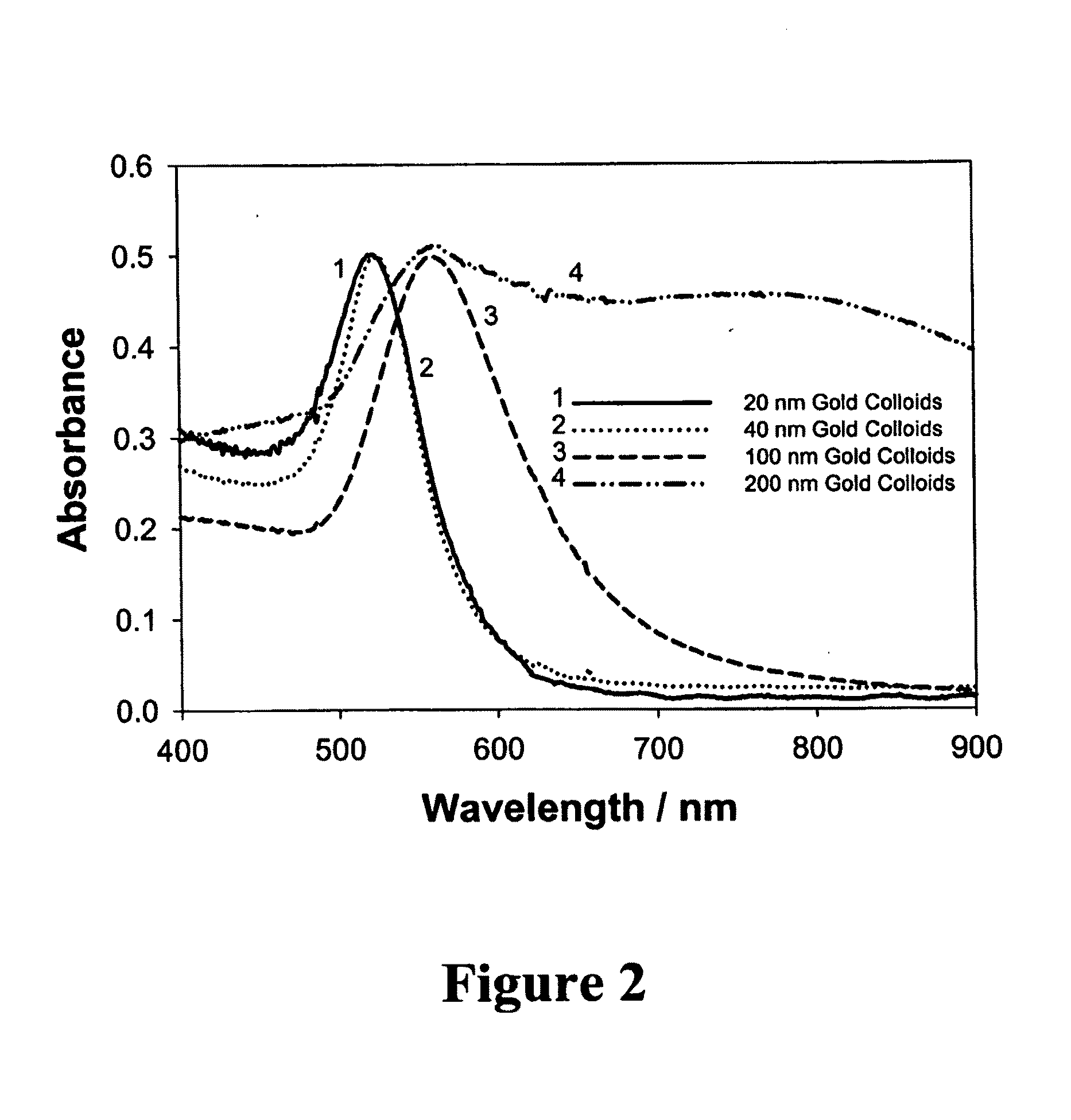Nanostructures for polarized imaging and receptor/ligan quantization: breaking the diffraction limit for imaging
a polarized imaging and nanostructure technology, applied in the field of assays, can solve the problems of photo instability, limited techniques, and most fluorophores typically photo degrade, and achieve the effect of reducing the polarization valu
- Summary
- Abstract
- Description
- Claims
- Application Information
AI Technical Summary
Benefits of technology
Problems solved by technology
Method used
Image
Examples
Embodiment Construction
[0050]The present invention relates to affinity biosensing using polarization of light scattering from of aggregated noble metallic nanostructures to determine concentration of an analyte in a sample. This new sensing system utilizes the changes in polarized scattering from very small nanostructures, as compared to the changes in scattering observed by much larger aggregates of the nanostructures, due to a receptor-ligand binding reactions.
[0051]The term “receptor-ligand” as used herein means any naturally occurring or unnaturally occurring binding couple wherein the components have affinity for each other. For example, the binding couple may include an antibody / antigen complex, viral coat ligand / protein cell receptor or any combination of probe and binding partner. The term “receptor” refers to a chemical group, molecule, biological agent, naturally occurring or synthetic that has an affinity for a specific chemical group, molecule, virus, probe or any biological agent target in a ...
PUM
| Property | Measurement | Unit |
|---|---|---|
| size | aaaaa | aaaaa |
| Forster Transfer distances | aaaaa | aaaaa |
| size | aaaaa | aaaaa |
Abstract
Description
Claims
Application Information
 Login to View More
Login to View More - R&D
- Intellectual Property
- Life Sciences
- Materials
- Tech Scout
- Unparalleled Data Quality
- Higher Quality Content
- 60% Fewer Hallucinations
Browse by: Latest US Patents, China's latest patents, Technical Efficacy Thesaurus, Application Domain, Technology Topic, Popular Technical Reports.
© 2025 PatSnap. All rights reserved.Legal|Privacy policy|Modern Slavery Act Transparency Statement|Sitemap|About US| Contact US: help@patsnap.com



